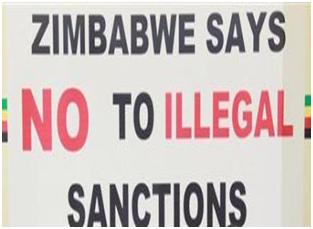By Derick Tsimba
Zimbabwe has lost more than US$10 billion due to the effects of sanctions, a University of Zimbabwe (UZ) Professor has said.
Addressing people at the 25th October 2019, Inaugural Anti Sanctions Day at the National Sports Stadium in Harare today, UZ Professor Albert Makochekanwa said after conducting a research study on the impact of sanctions on Zimbabwe, they found out that the manufacturing sector had been greatly affected resulting in loses worth billions of dollars.
“Any economy is hinged on the manufacturing sector, because of sanctions some companies have closed down. Bulawayo is one of the areas which was hit hard in terms of manufacturing.
“We have found that there has been a loss in terms of revenue of companies of more than US 7 billion between 2010 and 2015, a loss of export revenue worth US3 billion between 2010 and 2015. Investment funding has declined and in summary the manufacturing sector has been heavily affected.
“It is now difficult to get lines of credit internationally because of sanctions. We have seen also at individual level when you have relatives abroad who want to send you money, some of the money has bounced back in the bank when that particular bank was or is under sanctions,” said the UZ Professor.
Professor Mavhima also said sanctions had resulted in massive brain drain which has seen Zimbabweans going abroad to run away from the effects of sanctions.
“With regards to the impact of sanctions on migration and brain drain, the study found out that sanctions have profound negative effects on migration and brain drain whereby in terms of migration we have seen that some Zimbabweans have gone to other countries they think it’s better there because there are no sanctions. Those who are skilled, the learned teachers, engineers, doctors and various medical fields have gone abroad,” he said.
The Harare Post has learnt that the research on the impact of sanctions on Zimbabwe was commissioned by the Ministry of Higher and Tertiary Education Science and Technology in 2017. The study took 12 months going through the country’s 10 provinces.




